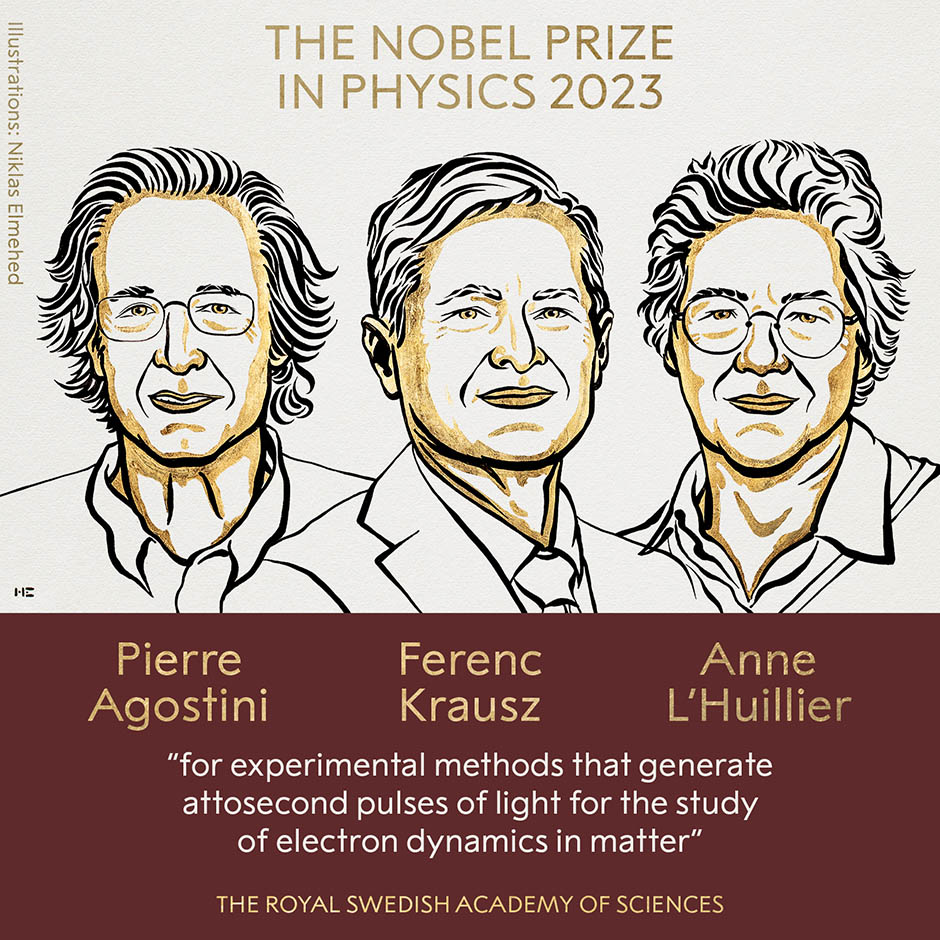Tuesday, 03 October 2023
Nobel Prize in Physics for innovative methods that generate attosecond pulses of light
As we congratulate the Nobel Prize winners and reflect on their monumental contributions, we at ICN2 are inspired and energized. We continue our journey in the realm of the ultrafast, where every attosecond pulse of light illuminates a world of possibilities, and every discovery is a step towards a future unfathomable in its potential.

The announcement of the Nobel Prize in Physics 2023 heralds a celebration of a remarkable stride in understanding light and matter. Pierre Agostini, Ferenc Krausz, and Anne L’Huillier have been awarded for their innovative methods that generate attosecond pulses of light, a discovery that stands to unlock unprecedented insights into the behavior of electrons in matter.
This extraordinary accomplishment in the field of physics has a harmonious echo in the halls of the ICN2. While we bask in the glow of the Nobel laureates’ achievement, we are reminded of the intricate dance of light and matter that our own researchers are intimately familiar with.
At ICN2, the scale of attoseconds is a familiar terrain. As a sparkling example, Prof. Klaas-Jan Tielrooij, Group Leader of the Ultrafast Dynamics in Nanoscale Systems Group, has recently spearheaded a study that unveils the ultrafast and tunable conversion of terahertz light into visible light in graphene systems. It is a discovery that not only aligns with the rapid timescales explored by this year’s Nobel laureates but also holds significant promise for the future of telecommunications and information technologies.
In the dance of light and electrons, from attosecond pulses to the rapid conversion of terahertz light, we find a symphony of research, innovation, and discovery that binds the global scientific community together in a narrative of progress that knows no bounds.

